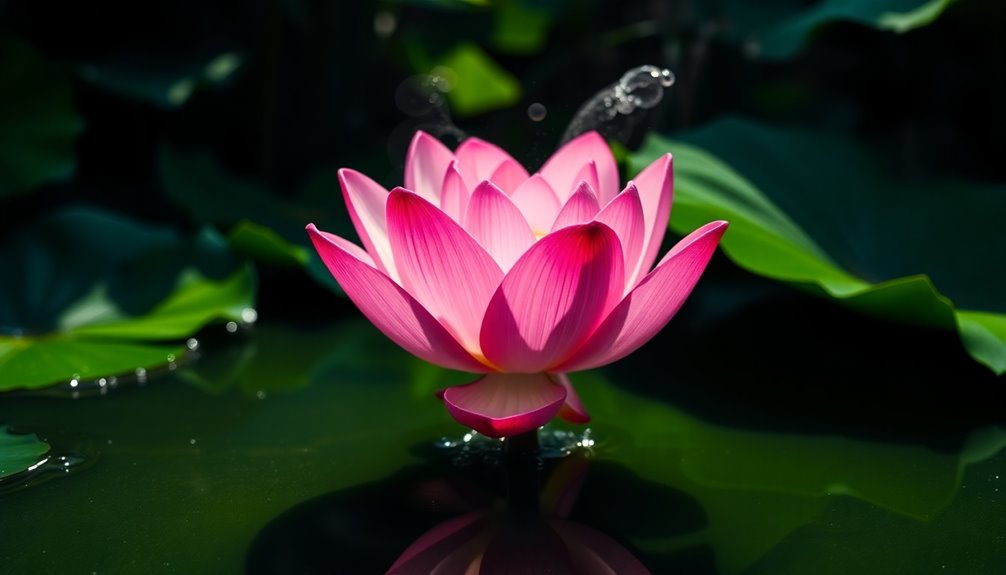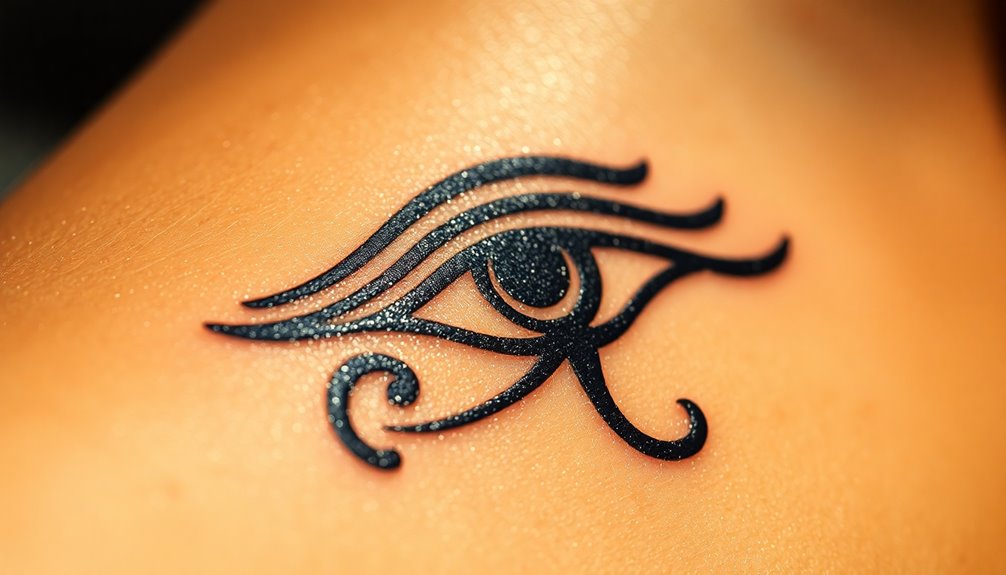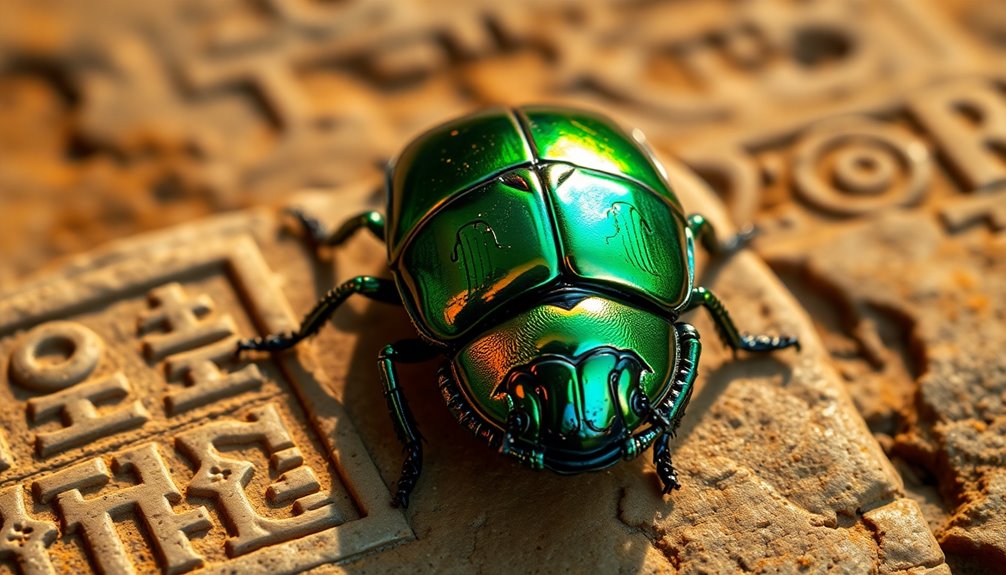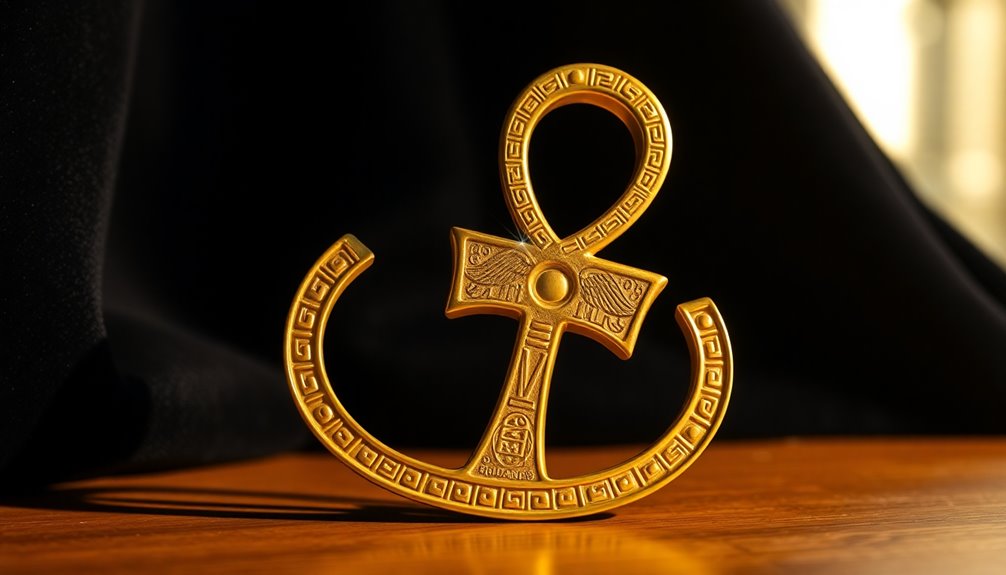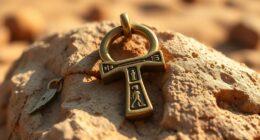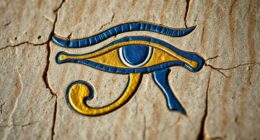The Egyptian cross symbol, called the Ankh, represents eternal life and the link between earthly existence and the afterlife. Its unique design—a cross with a loop—symbolizes balance and the cycle of life, death, and rebirth. Dating back to around 3000 BCE, the Ankh has deep roots in ancient Egyptian funerary practices and divine authority. Today, it transcends its historical origins, appearing in modern art, tattoos, fashion, and as a symbol of empowerment. Understanding its rich history and cultural significance reveals why the Ankh remains a powerful icon in various contexts today. There's much more to discover about this intriguing symbol!
Key Takeaways
- The Ankh, often referred to as the Egyptian Cross, symbolizes eternal life and the connection between the physical and spiritual realms.
- Dating back to around 3000 BCE, the Ankh is deeply rooted in ancient Egyptian beliefs about life, death, and rebirth.
- Frequently depicted in art, the Ankh represents divine authority and is often held by deities like Isis and Osiris in funerary contexts.
- The symbol has evolved, now embraced in modern culture as a representation of empowerment, cultural heritage, and personal transformation.
- Popular in jewelry, fashion, and tattoos, the Ankh continues to signify strength, unity, and a connection to one's roots.
Meaning and Symbolism

The Ankh, often recognized as the key of life, embodies profound meaning and symbolism in ancient Egyptian culture. This powerful symbol represents the eternal cycle of life and death, connecting the earthly domain with the afterlife. Its unique design—a cross with a loop at the top—illustrates the balance between mortal existence and the eternal soul.
In ancient times, the Ankh was more than just an artistic representation; it was a crucial symbol of fertility and life creation, linked to the divine union of Osiris and Isis. This connection highlights the ancient Egyptian belief in life-giving forces.
You'd often see the Ankh depicted in funerary art and rituals, where it served to guarantee safe passage to the afterlife. Deities holding the Ankh reinforced its protective and life-affirming properties.
Today, the Ankh still resonates deeply, embraced as a symbol of empowerment and cultural heritage. Whether in tattoos, jewelry, or holistic practices, it signifies a bridge between ancient traditions and contemporary interpretations, reminding you of the promise of eternal life that transcends time and culture.
Historical Origins

Dating back to around 3000 BCE, the Ankh symbolizes life and fertility, firmly rooted in the Early Dynastic Period of ancient Egypt. This iconic Egyptian Ankh serves as a powerful representation of the meaning of the ankh, closely associated with life and the belief in life after death. Scholars suggest its origins may derive from hieroglyphics symbolizing life or possibly even a sandal strap, as noted by Sir Alan H. Gardiner.
The Ankh was a prominent fixture in funerary practices, symbolizing the change to the afterlife, reinforcing its role in Egyptian culture. Over time, its significance transcended Egypt, as Coptic Christians adopted it in the 4th century CE, transforming it into a symbol of eternal life.
| Aspect | Description | Significance |
|---|---|---|
| Origin | Early Dynastic Period, 3000 BCE | Roots in ancient Egyptian symbol |
| Symbolism | Key of life, fertility, life after death | Central to funerary practices |
| Cultural Impact | Adopted by Coptic Christians | Symbol of eternal life through Christ |
The Ankh remains a powerful icon, capturing the essence of life and spirituality in ancient Egypt.
Cultural Significance
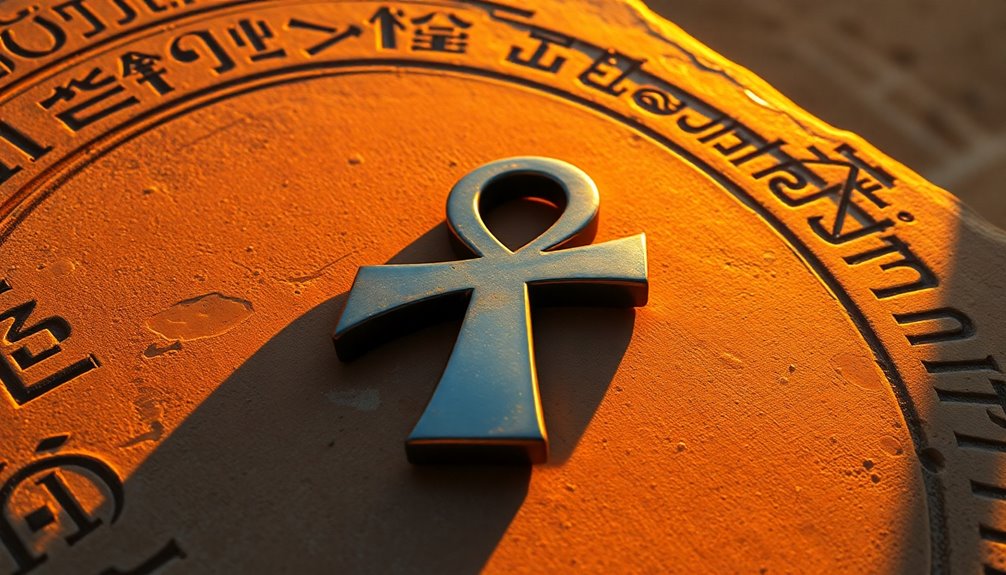
In ancient Egypt, the Ankh stood as a powerful emblem of life, embodying both earthly existence and the promise of the afterlife. This ancient symbol, often referred to as the "key of life," was deeply embedded in Egyptian beliefs and practices. It served as a potent symbol, representing the cycle of life, death, and rebirth.
You'd often see the Ankh depicted in the hands of deities like Isis and Osiris, emphasizing its divine authority over life and death. The Ankh was frequently used as a symbol in tombs and temples, acting as a protective talisman for the deceased, guiding them in their journey to the afterlife.
Its significance extended beyond funerary practices, influencing daily life in ancient Egypt. The Ankh's true origins may remain somewhat mysterious, but its cultural relevance persists through the ages.
Even today, the Ankh meaning resonates as it's incorporated into modern art, fashion, and body art, celebrating African heritage and identity. Overall, the Ankh remains a vibrant reminder of life's continuity and the enduring quest for immortality within human consciousness.
Modern Interpretations
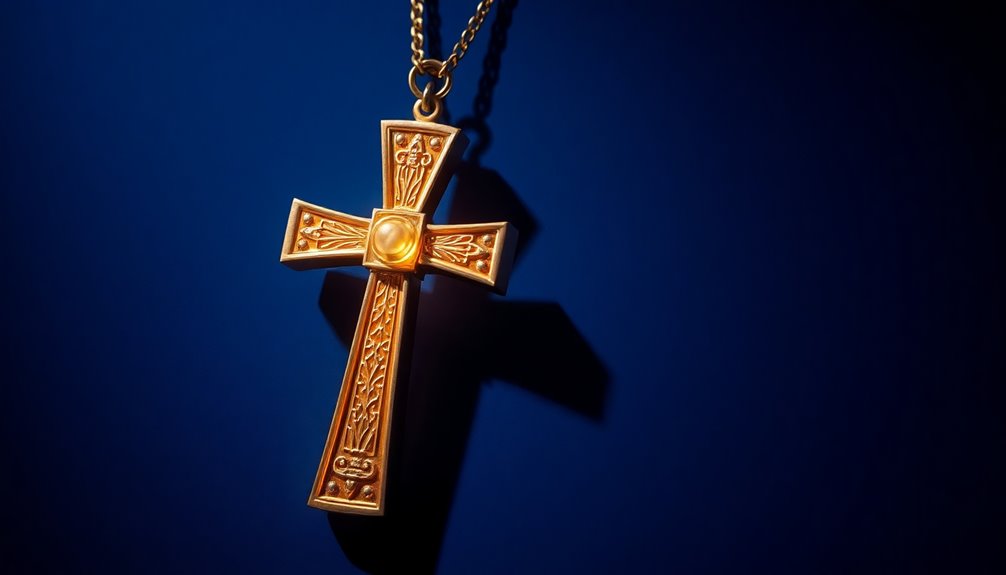
Many people today view the Ankh as more than just an ancient symbol; it embodies transformation and the merging of opposites. In modern interpretations, the Ankh serves as a powerful representation of eternal life, especially within Coptic Christianity, where it's used as an icon of faith.
It's a symbol used in tattoos, reflecting life and strength while narrating personal stories and beliefs.
The Ankh has also found its way into contemporary fashion and jewelry, representing cultural pride and empowerment, particularly in the African diaspora. By incorporating this symbol into their style, individuals connect with their heritage and express their identity.
In wellness and holistic healing communities, the Ankh is often viewed as a talisman, promoting protection and healing, underscoring its historical significance in health practices.
This versatile symbol transcends cultural boundaries and inspires discussions about diverse interpretations. As you explore the modern interpretations of the Ankh, you'll discover its role in contemporary spiritual practices and artistic expressions, revealing how this ancient icon continues to resonate in today's world.
Ankh in Art and Fashion

Creativity flows through the use of the Ankh in art and fashion, where it emerges as a potent symbol of life and spiritual connection. This ancient Egyptian icon is celebrated today, intertwining history with contemporary expression. Artists and designers harness its power, crafting pieces that resonate deeply with themes of empowerment and cultural identity.
- Jewelry: The Ankh graces necklaces, bracelets, and earrings, offering a bold statement that connects wearers to their heritage.
- Fashion: Designers integrate the Ankh into streetwear and haute couture, creating clothing that embodies pride and unity.
- Tattoos: Individuals stylize the Ankh in body art, signifying personal strength and a commitment to cultural roots.
The Ankh's presence in these domains highlights a growing appreciation for ancient symbols, reflecting a desire for transformation and renewal.
By showcasing the Ankh, you not only embrace a rich history but also contribute to a narrative that celebrates life and connection.
Whether it's through a striking piece of jewelry or a unique fashion statement, the Ankh stands as a timeless emblem that enriches both art and personal style.
Frequently Asked Questions
What Is the True Meaning of the Ankh Cross?
The Ankh cross represents life, death, and rebirth, symbolizing the eternal cycle of existence.
When you look at its unique shape, you see the connection between the physical and spiritual domains. Historically held by deities, it emphasizes the importance of life and transformation.
In modern times, you might find the Ankh in art or jewelry, embodying empowerment and resilience, making it a powerful symbol that resonates with many cultures today.
What Happens if You Wear the Ankh?
When you wear the Ankh, it's like carrying a tiny key to ancient wisdom.
You might feel a sense of protection, almost like a shield against negativity. Many people believe it promotes good fortune and connects you to life's energies.
You could find it enhances your well-being, aligning you with personal transformation. Plus, it serves as a reminder of your heritage, connecting you deeper to the rich tapestry of history and spirituality.
What Does the Bible Say About Ankh?
The Bible doesn't specifically mention the ankh, as it's rooted in ancient Egyptian culture. However, you might find connections between its symbolism of eternal life and biblical themes of resurrection and immortality.
Early Christians focused on the Cross for about 300 years before adopting other symbols. While the ankh represents life and fertility, its origins differ from Christian beliefs, making its direct biblical relevance a subject of debate among scholars.
What Does Wearing an Ankh Mean Spiritually?
Wearing an Ankh spiritually connects you to the cycle of life and immortality. It symbolizes balance, uniting masculine and feminine energies, which can enhance your spiritual journey.
This powerful talisman offers protection and good fortune, reminding you of your heritage and ancient wisdom.
In rituals and meditation, it helps invoke healing and transformation, empowering you to embrace your spiritual strength and resilience as you navigate your life's path.
Conclusion
In exploring the Egyptian cross, or ankh, you've uncovered a rich tapestry of meaning and history. This symbol isn't just an ancient relic; it's a powerful representation of life, death, and rebirth. Today, its influence can be seen in art and fashion, bridging the past and present. By understanding the ankh's significance, you connect with a deeper cultural narrative that continues to inspire and resonate. Embrace this mystery and let it guide your creative expressions.




